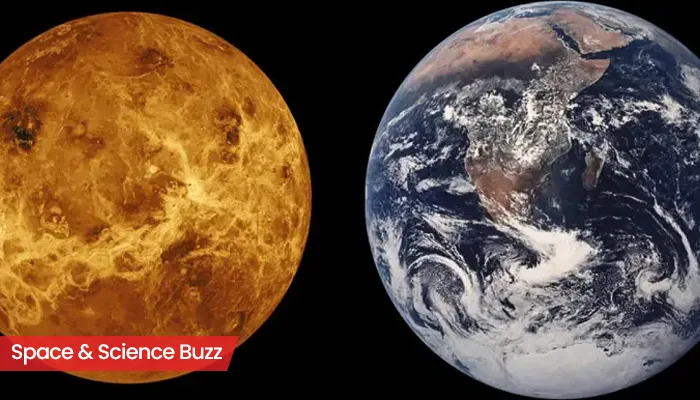
Here are today’s most important updates from the realm of Science and Space.
When the Sun Went Blue: The Science Behind a Historic Phenomenon
Scientists have finally solved the long-standing mystery of the Sun turning blue in Earth's atmosphere almost 200 years ago. A massive volcanic eruption in 1831 has been attributed as the reason for the colour change as massive plumes of sulfur dioxide were thrust into the atmosphere, causing global cooling and forcing our planet to play host to some weird climatic conditions that year. In 1815, the eruption of Mount Tambora in Indonesia led to a year without summer on the planet. The eruption released 24 cubic miles of gases, dust, and rock into the atmosphere, causing global temperatures to plummet, eventually leading to a 1-degree-Celsius cooling of the Northern Hemisphere. Scientists warn that there is a one-in-six chance that a similar volcanic eruption that could disrupt life on the planet will take place this century.
Cosmic Hall of Mirrors: A Glimpse Into 44 Unknown Stars

A group of physicists at Durham University in the United Kingdom have identified over 44 previously unknown stars that were hidden behind a cluster of galaxies. The newly discovered constellation of stars are located in a galaxy named Dragon Arc, nearly 6.5 billion light-years away from Earth. The Dragon Arc galaxy was unnoticed so far since it is located behind another cluster of galaxies called Abell 370. The identification was made possible through magnified images captured by the James Webb Space Telescope (JWST). The images show how the stars looked during “cosmic noon,” a period of the universe when the most number of stars were born. This is the first time so many individual stars have been discovered or observed at such a distance.
Pyramid in the Ice: Alien Theories Ignite Over Antarctic Mountain

The pyramidal mountain, which doesn't have a formal name, became internet-famous in 2016. The mountain that's hidden in a sea of snow in Antarctica looks strikingly like an ancient Egyptian pyramid when viewed from above. But no human (or alien) hands were needed to build this peak — it was forged through the slow, grinding process of erosion. Antarctica's "pyramid" is about 4,150 feet (1,265 meters) tall, or about one-fifth the height of Denali, the tallest mountain in North America. It has four steep sides and is located in the southern Ellsworth Mountains. The region is known for holding 500 million-year-old fossils of trilobites and other critters dating to the Cambrian period (541 million to 485.4 million years ago).
Scientists Reveal Shifting Human Temperature Trends

The widely accepted benchmark for normal human body temperature has been 98.6°F (36.6°C). However, according to recent groundbreaking research from Stanford University, it’s time to rethink this long-standing standard as the normal human body temperature is no longer the same. New findings revealed that the average body temperature is not as uniform as previously believed. In fact, the range of “normal” body temperatures was found to vary between 97.3°F and 98.2°F (36.2°C to 36.8°C), with the oft-quoted 98.6°F rarely observed in practice. Body temperature is influenced by numerous factors, including age, gender, and the time of day.



.webp)
.WEBP)
.WEBP)
.webp)
.webp)


.webp)
.webp)
.webp)